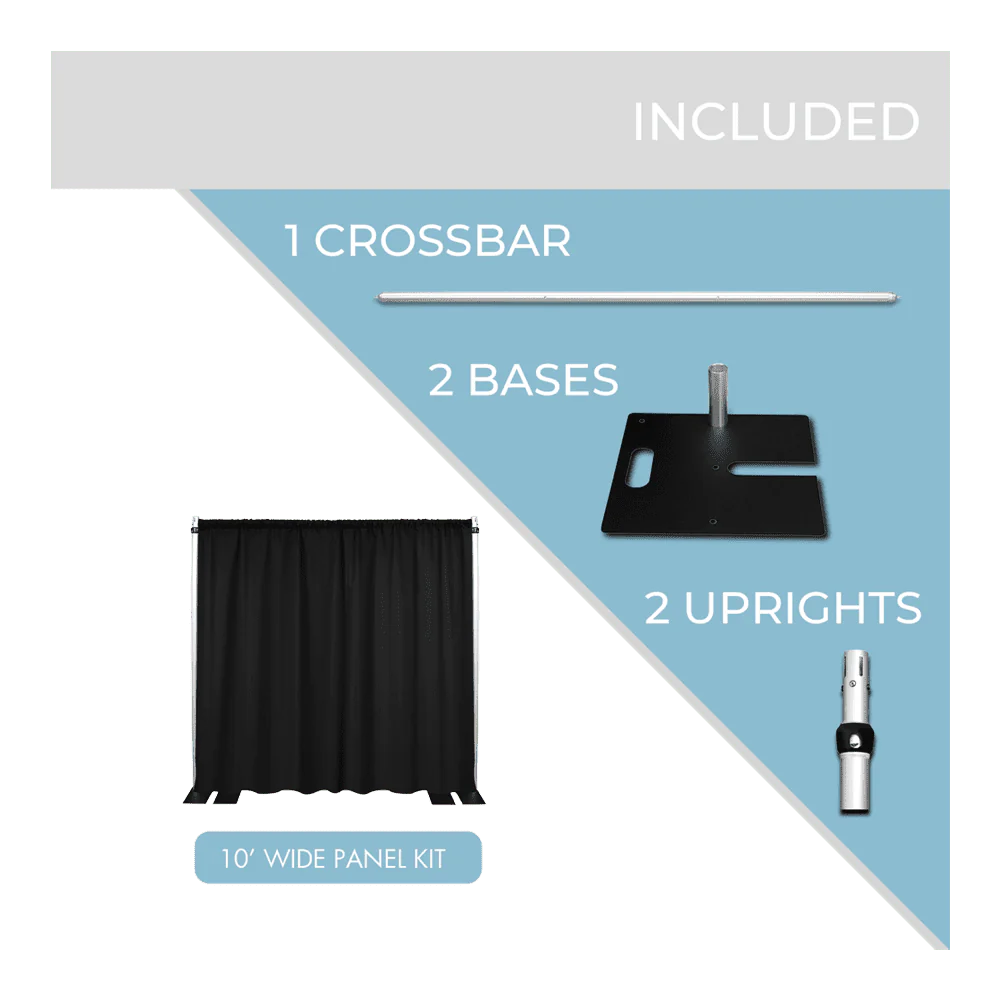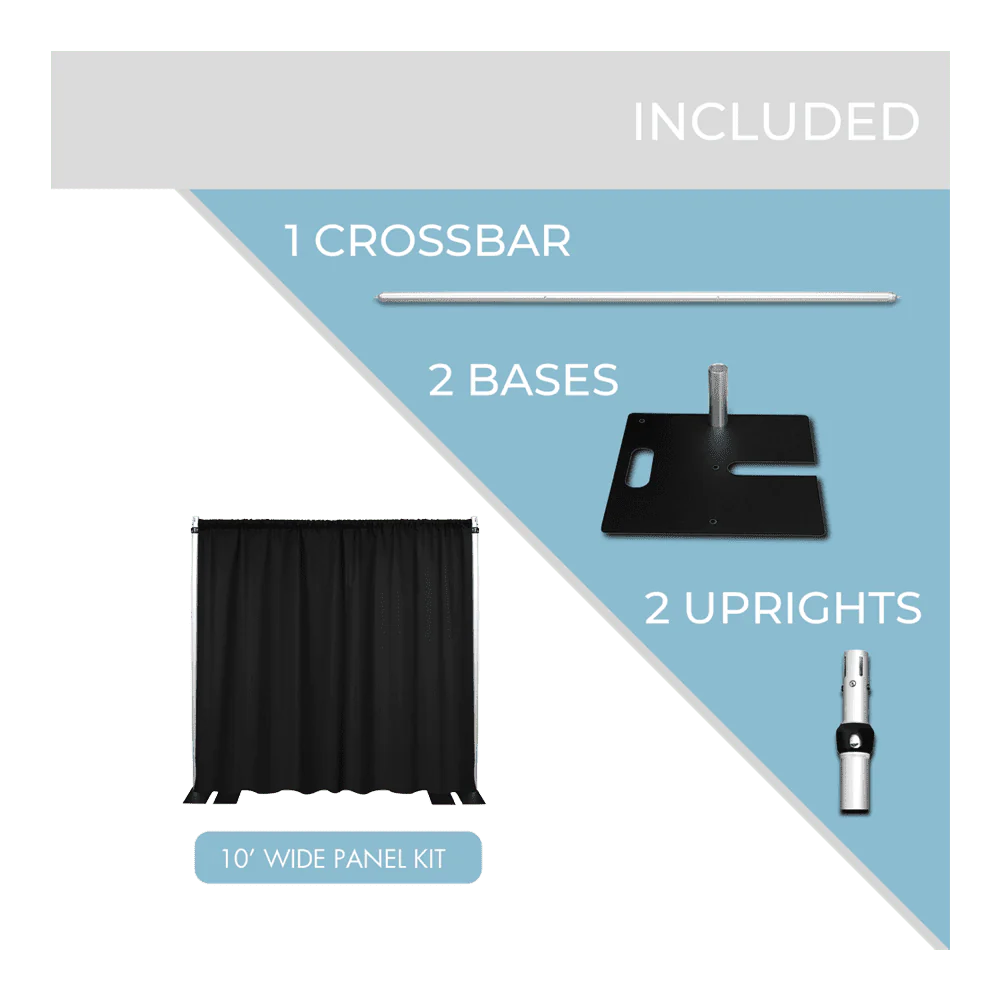Understanding Pipe and Drape Hardware: Essential Components for a Perfect Setup
Pipe and drape systems have revolutionized the world of event design, trade shows, weddings, and stage productions. They offer a versatile and professional way to create backdrops, booths, room dividers, and elegant event spaces. At the heart of every successful pipe and drape installation lies a set of essential pipe and drape hardware. Understanding these hardware components is key to creating stunning and stable setups.
In this article, we'll break down what pipe and drape hardware is, the essential parts involved, their different types, and how to choose the right hardware for your needs.
What Is Pipe and Drape Hardware?
Pipe and drape hardware refers to the structural elements that support and hold up the fabric (drape) used in setups. These components create the framework that makes backdrops and booths stand tall and secure. Without strong and correctly assembled hardware, the drapes would have no form or stability.
Pipe and drape systems are designed to be modular, adjustable, and easy to assemble, making them perfect for temporary or semi-permanent installations at events of all sizes.
Key Components of Pipe and Drape Hardware
Understanding the basic components is essential whether you are setting up a simple photo booth backdrop or an elaborate stage design. Here are the core pieces of hardware:
1. Bases
Bases are the foundation of the entire structure. They are heavy, flat plates made of steel or aluminum that anchor the vertical pipes and provide stability.
Base Sizes: Common sizes include 14”x16”, 18”x18”, and 24”x24”.
Base Weights: Heavier bases are required for taller and wider setups to prevent tipping.
Base Pins: A pin (or spigot) is attached to the base and is where the upright pole slides over for assembly.
2. Upright Pipes
Uprights are the vertical poles that determine the height of your pipe and drape structure.
Fixed Height Uprights: A set height, such as 8' or 10'.
Adjustable/Upright Telescopic Poles: Can be adjusted to different heights (e.g., 6’-10’, 7’-12’).
Locking Mechanism: Adjustable uprights typically have a locking button or collar that secures the desired height.
3. Crossbars (Drape Supports)
Crossbars, or horizontal drape supports, connect two upright poles and support the fabric drape across the width.
Fixed Width Crossbars: Standard widths like 6’, 8’, or 10’.
Adjustable Crossbars (Telescoping): Extendable crossbars adjust to various widths, ideal for flexible setups.
Hooks: Each end of the crossbar has a hook that locks into slots on the uprights.
4. Drape Panels
While technically not hardware, the drapes are an integral part of the system, hung over the crossbars to create the desired aesthetic. Drapes can be sheer, velour, poly premier, or other fabrics depending on the event’s look and feel.
5. Accessories
Additional hardware pieces enhance the flexibility and strength of pipe and drape setups:
Slip-Fit Adapters: Allow the use of multiple crossbars on one upright for layering or wider setups.
Sandbags/Weight Bags: Extra stability for outdoor or tall setups.
Curve Crossbars: Create curved backdrops or unique layouts.
Storage Carts: Help with transporting and organizing pipe and drape hardware.
Types of Pipe and Drape Hardware Systems
Not all pipe and drape hardware systems are the same. They can vary based on the complexity and height needed:
Standard Systems: Common for simple, elegant setups, trade shows, and weddings.
Heavy-Duty Systems: Built with thicker pipes and heavier bases for tall and wide backdrops or outdoor use.
High-End/Tech Kits: Feature advanced locking mechanisms and specialized designs for professional productions and complex staging.
Choosing the right system depends on the height, weight, environment (indoor vs. outdoor), and aesthetic requirements of your event.
Tips for Choosing Quality Pipe and Drape Hardware
Prioritize Stability: Ensure you use heavy enough bases and consider adding weight bags for extra security.
Use Adjustable Pieces: Telescoping uprights and crossbars offer flexibility for different venues and events.
Invest in Durability: High-quality aluminum or steel hardware will last longer and perform better.
Think About Portability: If you plan on frequent setups and teardowns, lightweight and modular designs are preferable.
Plan for Expansion: Choose systems that allow you to add accessories or expand later.
Conclusion: The Backbone of a Beautiful Setup
Pipe and drape hardware is the backbone of any stunning event space. From sturdy bases to adjustable uprights and crossbars, each component plays a critical role in creating a stable, safe, and beautiful environment. Investing in high-quality hardware ensures your setup looks professional and stands the test of time — whether for weddings, trade shows, theater productions, or corporate events.
If you're looking to create unforgettable event spaces, selecting the right pipe and drape hardware is the first step toward success.
Ready to build your perfect backdrop? Choose reliable, USA-made pipe and drape hardware to ensure quality, ease of use, and stunning results every time.




Comments
Post a Comment